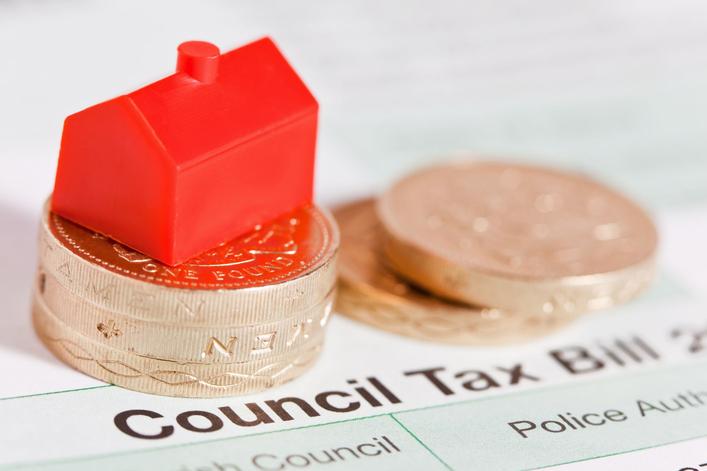Three in 10 households who challenged their council tax last year successfully secured lower bills for the future and should also receive refunds for the tax that they have overpaid, according to data released today.
The government’s Valuation Office Agency (VOA) says that of the 40,620 cases put forward in 2020-21, 11,670 successfully had their property moved to a lower council tax band.
However, 40 households saw their bills increase – an off-putting prospect, but one that only affected 0.1% of all appeals. The majority of remaining cases were unchanged.
Here, Which? explains how you can apply for a council tax refund or reduction and how to get help if you can’t pay your bill.
How to apply to change your council tax band
If you think your property has been placed in the wrong council tax band, you’ll need to contact the VOA in England and Wales, or the Scottish Assessors Association (SAA) if the property is in Scotland.
To make an appeal, you’ll either need to show proof that the property was put into the wrong band when it was first assessed, or that changes to the property since its valuation mean it needs to be assessed again.
Requests for a new assessment will be considered for the following reasons:
Before you make an appeal for any of the reasons listed above, you should complete the following steps:
If your neighbours’ properties are similar to yours, you should be in the same council tax band. If you know them well enough to ask, it’s worth seeing how much council tax they pay – if they’re on a lower band than you, yours could be wrong.
You could also check to see what council tax people in your area pay by checking the VOA or SAA websites.
The Which? council tax calculator can reveal what people in every council tax band pay in your area – just enter your postcode into the tool below.
Council tax bands are based on what the value of the property would have been in April 1991 if it’s in England and Scotland, or April 1993 in Wales.

In order to challenge your council tax band, you’ll need to know what the property’s value would have been on that date – even if it hadn’t been built yet.
Property websites such as Rightmove and Zoopla can give you a general idea of your home’s current value, which you can then use with the Nationwide House Price calculator, which gives a valuation for the relevant year.
If you still think your property is in the wrong council tax band after taking the steps above, it could be worth making a challenge. There are two procedures to choose from:
If your appeal is denied, then your council tax band – and bill – will stay the same.
If a review is accepted, note that your property could be put in a higher band or a lower band, depending on what is found as part of the valuation. If your property is placed in a higher council tax band, your bills will become more expensive.
How council tax is calculated
Council tax bills are calculated differently in each UK nation.
In England, properties are sorted into bands ranging from A to H, based on the price they would have sold for in April 1991. The VOA assesses properties built after this date by taking the property’s layout, size, character, location, use and estimated value into account.
In Scotland, property bands also range from A to H based on an April 1991 value, but the band ranges are slightly different.
In Wales, property values are based on the market value from April 1993, and there’s an additional band – so they’re sorted from A to I.
Northern Ireland uses a domestic rates system. Council tax bills are calculated using a formula based on a property’s value, its domestic regional rate and the domestic district rate.
These often-confusing systems have been frequently criticised for being outdated. In July of this year, the Housing, Communities and Local Government Committee called for ‘long overdue’ reforms to council tax property values in England, saying the current system was becoming increasingly detrimental to more deprived areas.
Other council tax reductions
If you don’t think your property is in the wrong council tax band, there may be other ways to reduce your bills, depending on your circumstances and who you live with.
If you live alone, or with someone who isn’t counted as having to pay council tax, you could get a 25% discount. Those who are disregarded for council tax include student nurses, full-time students, those under the age of 25 in approved training and members of visiting forces. Our guide to reducing your council tax bill can give more information on this.
These discounts are not applied automatically. If you think you’re eligible, you must make an application for the discount and you’ll usually have to provide proof.
What if you can’t pay your bill?
Council tax bills are considered a ‘priority’ payment – this means it’s a bill you should prioritise paying over some other forms of debt or payments. This is because measures to enforce payment can quickly escalate, with the most extreme cases ending up in court.
To avoid this, anyone struggling to pay theirs should contact their local council as soon as possible. It may be able to help set up a discount or alternative payment arrangements, However, these are granted at each council’s discretion and you’ll usually need to prove that neither your earnings, savings nor other assets will be able to pay what you owe.
Those who are experiencing what’s deemed as ‘exceptional hardship’, for reasons beyond their control, may be eligible for hardship relief. Your council will be able to advise whether you’re eligible.









